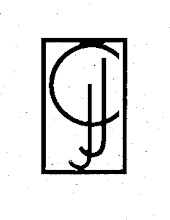 As you may already have guessed, I am neither a frequent sports spectator or participant.
As you may already have guessed, I am neither a frequent sports spectator or participant.Football especially repulses me. I've seen enough victims of stroke, head trauma, dementia, and other neurological upsets to know that the extent of damage often goes undetected initially, and the consequences affect more than the victim. This is why I cannot comprehend the entertainment value of men repeatedly bashing into one another. My brain categorizes it as violence, but my perspective is not shared by a majority of Americans.
"Lill," one of them might say. "Those men are padded from head to toe—plus they're well trained, well conditioned athletes who know what they're doing. They'll be fine."
I would guess that the padding allows harder hits, lulling players into believing they're protected from severe injury. This belief may be true of much of the body, but not the head. And now researchers and a few retired, addled NFLers back me up.
Just as I've always thought, you can't hit your head over and over again without scrambling your noodle. There doesn't have to be blood or a skull fracture for a brain injury to occur. And for some players, the extent of the damage doesn't surface until middle age when their brains give way to early dementia. Sure, their bodies may be kept in great shape from exercise and doctors' repairs. But what good is a great body with a broken control center? What good is a Super Bowl ring if it renders you an emotional and intellectual invalid?
Some players are pressuring the NFL Commission to come clean on the truth and to provide better support for the healthcare needs of players once they've left the league. Even Congress is getting involved, and the issue made the front cover of Time magazine recently.
Time's overview of the situation contains two ideas from football players which are simple to implement and brilliant in their positive approach to a solution:
Idea No. 1: Tackle from the hips and thrust upward, causing the head to move away from the action. This technique is already being adopted by youth league coaches.
Idea No. 2: Change the language used to discuss football. At first glance, this may seem trivial. But as pro players Kyle Turley and Kevin Mawae know, language = culture. The references to military strategy and the euphemisms used to describe head injuries (e.g., a big hit is a "ding," getting knocked unconscious is "getting your bell rung") should reflect the truth. Surely English is broad enough to offer an alternative vocabulary that's firm, emphasizes winning without brutality, and inspires competition without visions of combat.
Of course, more will have to be done to prevent aging football players from becoming America's largest scrambled noodle club (my husband's pet name for people, like himself, who have experienced a head trauma). As Hall of Fame linebacker Harry Carson, who suffered through 12–18 concussions, put it: "I know that when you sustain a brain injury, it doesn't g
 o away."
o away."Okay. Grab your nachos or your foie gras or whatever you serve your Super Bowl guests and go watch two teams of mammoth, muscle-bound, padded men crash into one another because it's their job (and their passion). Then thank your lucky stars it's not your noodle getting scrambled.
[Pic of Chicago Cardinals by Nate Fine. Disclosure: My uncle, Loyd Arms, played for the Cardinals in their 1947 championship year—back in the era when players were muddied and bloodied in nearly every game.]



No comments:
Post a Comment